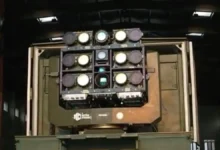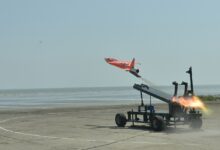The Pralay SRBM Is a Missile Capable of Dodging Air Defence Systems.

The Defence Research and Development Organisation (DRDO) successfully tested the Pralay, a new surface-to-surface conventional quasi-ballistic missile, on Wednesday, providing a boost to India’s tactical combat strategy.
A quasi-ballistic missile has a low trajectory and can manoeuvre in flight while primarily ballistic. Pralay will be able to hit a target as far as 400 kilometres away with a 500kg payload. Pralay was created to counter the Chinese Army’s deployment of the Dongfeng 12 (DF-12) short-range tactical ballistic missile along India’s border. The Dongfeng 12 (DF-12) is believed to have a range of 100-250 kilometres, with a maximum range of 400 kilometres.
The Pralay missile will be a key component of the forthcoming Rocket Force, India’s fourth arm of the armed forces, which will be raised soon. Because of its non-parabolic trajectory, Pralay (havoc, devastation) will be able to strike rapidly and hit valuable targets inside the enemy camp while also evading the air defence system.
Pralay can fly depressed trajectories and vary its flight in the terminal phase because to its jet vane control system (JVC) and tandem fins. Any modern dedicated anti-ballistic missile defence system, as well as any air defence system, will find it nearly hard to intercept a ballistic missile that flies like a subsonic cruise missile inside the atmosphere but at near hypersonic speeds.
Pralay will also be equipped with an inertial navigation system (INS) and a warhead that weighs less than 800 kilogrammes and has a circular error probable (CEP) of fewer than 10 metres. Pralay will also have an unusual flight profile and the capacity to change directions, making it more unpredictable and increasing the challenge level for Air Defense Systems. The launch platform’s mobility also makes it difficult to halt a launch.







Facebook Comments